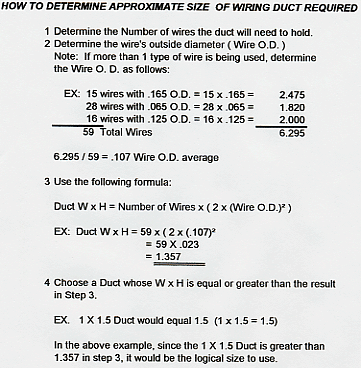|

|
|
|
Learn more about various situations and how to solve real problems
|
|
|
 |
 |
|
Allied Moulded Products:
- Q: What are NEMA Ratings vs. IP Ratings?
- A: NEMA stands for "National Electrical Manufacturers Association". It is a numbering system recogized in the United States for different degrees of enclousure protection from the Elements. IP is the international standard for enclosure protection. Review the Charts below for the various ratings
|
| NEMA Enclosure Ratings |
| Nema 1 |
Indoor use - protect against falling dirt |
| Nema 2 |
Indoor use - protect against limited amounts of falling water and dirt. |
| Nema 3 |
Indoor or Outdoor use - protect against falling dirt, rain, sleet, snow and wildblown dust; and that will be undamaged by the external formation of ice on the enclosure. |
| Nema 3R |
Indoor or Outdoor use - protect against falling dirt, rain, sleet and snow; and that will be undamaged by the external formation of ice on the enclosure. |
| Nema 4 |
Indoor or Outdoor use - protect against falling dirt, rain, sleet, snow ,wildblown dust, splashing water, hose-directed water; and that will be undamaged by the external formation of ice on the enclosure. |
| Nema 4X |
Indoor or Outdoor use - protect against falling dirt, rain, sleet, snow ,wildblown dust, splashing water, hose-directed water and corrosion; and that will be undamaged by the external formation of ice on the enclosure. |
| Nema 12 |
Indoor use - protect against falling dirt, circulation dust, lint, fibers and flyings, and dripping and light splaching of liquids. |
| Nema 13 |
Indoor use - protect against falling dirt, circulation dust, lint, fibers and flyings, and spraying and seepage of water, oil and non-corrosive coolants. |
|
| IP Enclosure Ratings |
|
1st Digit
|
IP Test
|
2nd Digit
|
IP Test
|
|
0
|
No Protection |
0
|
No Protection |
|
1
|
Protect against solid bodies larger than 50 mm |
1
|
Protection against vertical water drops and condensation. |
|
2
|
Protection against solid bodies larger than 12 mm |
2
|
Protection against water drops up to 15° from the vertical |
|
3
|
Protection against solid bodies larger than 2.5 mm |
3
|
Protected against rain up to 60° from the vertical |
|
4
|
Protection against solid bodies larger than 1 mm |
4
|
Protected against water splashing from a hose from all directions |
|
5
|
Protection against dust |
5
|
Protected against water sprayed from a hose from all directions |
|
6
|
Complete protection against dust |
6
|
Protected against water projections sikilar to sea wave splashes |
|
|
7
|
Protected against the effects of immersion |
|
|
8
|
Protected against effects of prolonged immersion under pressure |
|
|
|
 |
 |
IBOCO:
- Q: What size duct do I need?
- A: Use the following formula to calculate fill capacity of the Wiring Duct:
-

|
|
|
 |
 |
Trans-Coil, Inc.:
- Q: How do I applied a Line Reactor?
- A: First of all a Line Reactor is an input device to protect a drive from voltage transients. In order to size it properly, you need to know what the input current to the drive is as well as the voltage. Also, you need to know what type of filtering you require. If you are looking to prevent the drive from tripping from voltage conditions a 3% reactor would be recommended. If, howerver, you want to prevent physcial damage to a drive or reduce harmonics back in your buss system, then a 5% reactor is required. After making that determination you select the reactor that closely matches you input amps of the drive.
- Q: Can I use a Line Reactor as a Load Reactor?
- A: Some Manufacturers suggest that a Line Reactor can be used as a Load Reactor. TCI feels that using a Load Reactor is more suitable for application of approximately 100 feet or less. A Load Reactor is very similiar in design to an Input Reactor with differences in the windings. A Line Reactor can actually increase the effects of long lead cables causing more harm to the motors and cables. When your cable distance exceeds 100 feet or you want to ren multiple motors or you want to you switching freqency higher that 2.5 KHZ you then need an output filter to elimate your problems.
|
|
|
 |
 |
|
Powerohm:
- Q: How do I size power resistors for intermittent duty?
- A:

|
|
|
 |
|
|
|